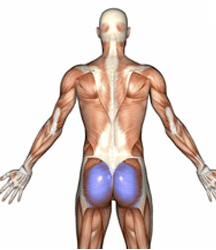Despite the ubiquitous pitch to trim down by most people who seek my services, I often get questions about how to successfully gain weight. Contrary to popular belief, gaining quality weight (without a subsequent increase in significant body fat) can require as much dedication as trying to reduce body fat while maintaining muscle mass. A big part of this conundrum circles around each individual’s somatotype (refer to “What’s your body type…or should I say Somatotype?”). It also comes down to having the right information. I gave 8 major weight gain tips in “quick tips to gain weight the right way”. The following tips compliment the 1st 8 and further assist anyone trying to gain quality weight:
1. Create a calorie surplus – gaining weight and losing weight honestly boil down to simply mathematics. To gain weight, eat more calories than you burn. To lose weight do the opposite. Without question though, you must eat big to get big. Since muscles are metabolically active they require a certain amount of cals to grow, more than that of non-metabolically active tissue. There are several recommendations of how many calories one should intake to gain weight, some based off fat free mass, some off entire body weight, some based in kg, others in lbs., etc. Generally, when counting cals, around 15-20 cals/lb. of bodyweight has worked well for me and people I’ve worked with. The exact number will of course vary by individual. Some hard gainers may need up to 25 cals/lb. of bodyweight to see any real weight gain. For others, its imperative that you keep an eye on your overall physique to make sure flab isn’t on the come up. If that happens trail back the cals/lb. of bodyweight. Also keep in mind the amount of cals you burn throughout the day will impact your recommended calorie intake as well.
2. To eat more, eat less – intuitively you may think hoarding cals into 3 huge meals will be the best way to ensure increased calorie intake. However, it’s actually easier on your metabolism, digestive system, and muscle growth to divide your daily calories into 5 to 7 meals a day. Eating big meals trigger extreme insulin responses by the body guaranteeing excess fat storage, lethargy and increased time between meals. Keeping consistent intervallic calorie intake allows for constant nutrient delivery to muscles and facilitates anabolism. Rule of thumb is to eat every 2-3 hours; time between meals and snacks shouldn’t exceed this.
3. Shake shit up – no matter how big you are, how ravenous your appetite, there’s only so much food you can eat in a day. Liquid cals are great for this purpose because they give you complete control over what you intake (homemade shakes), they are portable and easily accessible, and they digest quickly. One to two shakes a day can add a surplus of over 500 – 600 cals a day.
4. Quality over quantity (keep it healthy!!!) – “getting big” or “bulking” is not an excuse to devour gratuitous calories from junk foods. Poor diet choices destroy physiques; one or two cheat meals a week to keep you from losing your mind is fine, but make healthy foods the foundation of your diet. Beware the cheat day! One cheat day can cancel out a whole week of hard work.
5. Low carb, no carb, no way! – Carbohydrates fuel exercise and will give you the energy to lift big. Complex, low glycemic, slow digesting carbs are best (quinoa, rolled oats, whole grain cereals). The exception to the rule is post workout where your meal should be filled with high glycemic, simple, fast digesting carbs to replenish energy lost during exhaustive exercise (juice, white potatoes, dextrose).
6. Get enough protein – protein/amino acids are the foundation for muscle growth. 1 – 1.5g/lb. of body weight for mass gain (up from the normal .8 recommendation for the average person). Aim for high quality high bioavailable proteins from varying sources to ensure adequate amino consumption.
7. Get enough fat – fat provides more cals than protein or carbs making it an easy way to increase calorie intake. It also helps keep testosterone elevated for muscle growth. Aim for polyunsaturated fats (flax seed, salmon, walnuts) and small amounts of sat fat (beef and dairy). Avoid trans fats (processed, baked and fried foods).
8. Post workout – eating the proper meal in a proper window (2 hours or less) after exhaustive exercise maximizes recovery and anabolism at a time when your body is most primed for nutrient uptake: Ingest high glycemic carbs with high quality protein (refer to “A Summary of Macronutrients”)
9. Preplan for success – maximize efficiency and reduce missed opportunities by using downtime to prepare meals in advance. This reduces the likelihood of ingesting unhealthy non-progressive food due to lack of time or lack of options.
